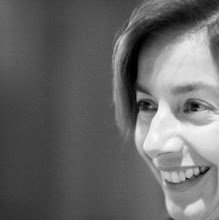Ayya Khema talks about this life as an ongoing adult education course. The main topic of the class is wisdom, of course. Many times, I find myself faced with a situation where mindfulness offers the possibility of choice. This way, or that one. Usually, the most immediate impulse is not the most advisable one. Underlying tendencies die hard, and always raise their heads when emotions are involved. This is particularly true for primary relationships. But if one has developed enough insight, the mind does not give way to such impulses. Instead, the memory of prior similar times with the same person or a different one, provides scenarios ripe for contemplation.
Twenty years ago, when I did not know about the hindrances and their way of overtaking the heart, I let anger sever a precious bond, and a very sad story unfolded in the aftermath. Twenty years later, I am still feeling the effects of my decision. I also have a chance to not repeat the past, this time with a different partner. Whenever I find myself triggered, I now have mindfulness to rest on, and the wisdom to choose not to react to the outer trigger. The urge to love has also become greater than the iron hotness of anger. Every night, I dwell in the garden of my heart, and I survey the situation. First, noticing the weeds, a resentment, some fear, greed, whatever they may be, I know better than to let them overtake the beautiful flowers which I know to be there. I give it a try. Pulling out the weeds sometimes takes for than one try. Those things have a way of digging deep, fast, and it may take days, weeks, months, before I can enjoy the peace and love again.
The ability to remember is key to this whole process. Without memory, the mind cannot learn nor make the leap of inference from one past event to the present moment. Science tells us this about episodic memory:
Episodic or implicit memory is the memory of an event or “episode”. [...] Episodic memory can be thought of as a process with several different steps, each of which relies on a separate system of the brain. The initial step in forming this type of memory is called encoding. Encoding is necessary for the acquisition of new factual knowledge. [...] The step by which the information is accessed and brought back into consciousness is called retrieval. [...] Research and clinical experience suggest that information is not simply stored and retrieved, and that there may be an intermediate step in this process, which we call consolidation. Consolidation is the process by which recently learned information becomes more strongly represented in the brain.
This morning, feeling grateful for the gifts of mindfulness, memory, and wisdom.



